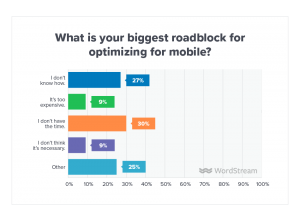DID YOU KNOW: 93% OF ALL ONLINE EXPERIENCES BEGIN WITH A SEARCH ENGINE, AND GOOGLE OWNS UP TO 70% OF SEARCH ENGINE MARKET SHARE?
On-Site SEO optimisation is crucial to getting on the first page of Google for your specific keywords. Google will look at your web pages, with guidelines in mind, and rank your page based on a number of specific criterias.
Most small businesses are not understanding how important SEO is because they think that the likes of ASOS will always outrank them. Yes, this is true, but they pay thousands of pounds to be there. Organic search is the way forward, and I’m here to share with you 7 of the best guidelines for on-site SEO optimisation.
1. UNIQUE PAGE TITLE
Your page title, and description are what defines your on-page content. You need to make sure your keyword is as close to the start of the title as possible. This is not always easy, and if it can’t be at the beginning, make sure it is somewhere in the title.
Having your keywords in your page title, and description will give you a big tick by Google and rank you higher. I would recommend your Title should be between 55-60 characters
2. KEYWORDS IN URL, META DESCRIPTION & IMAGE ALT TAGS
After making sure your page title has your focus keyword, you then need to make sure your URL, meta description and image ALT tags, all contain your focus keyword/phrase. For your on-site SEO optimisation, this is a key step. You may have to manually change your URL, so that it matches your page title.
3. OUTBOUND LINKS
Outbound links are one of the easiest ways to optimise your SEO on-site. An outbound link is hyperlinked behind a word or phrase that once clicked on, will take you to another page. You should use Outbound links to quality sources, and pages that you trust, or have a relationship with.
4. REMOVE DUPLICATE CONTENT
When writing content, you need to make sure that it is unique. You can refer back to previous pieces of content, but try to make sure 85% of the content you are writing is new, and unique.
5. INTERNAL LINKS
I mentioned outbound links above, but you must also remember to do internal links. An internal link is where you hyperlink a word, or phrase with a URL to another page on your website. Google’s bots will crawl your website to make sure you are using internal links, and that they are working. The more “paths” you have, the better chance you have of getting on the front page of Google.
6. GREAT CONTENT
When writing a piece of content, whether its for a blog post or a general page on your website, there are some rules you have to follow for Google to give you a big thumbs up. The length of your content should be based on your industry, target market and your authority. I know that my audience, being small businesses are time short so I make sure my posts can be read in under 5 minutes. This usually means my content is between 400-800 words.
7. GOOGLE ANALYTICS
Whilst not directly related, understanding your website analytics is extremely important when it comes to your SEO ranking. You need to understand what your audience WANTS to see from you, and you can analyse this using Google Analytics. If you know your audience are engaging with you, Google will give you another big thumbs up.
How do you make sure your on-site optimisation is as good as it can be?
Digital & Social Articles on Business 2 Community(85)
Report Post







